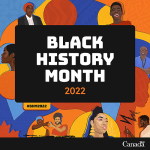By Sarah Murdoch
This year we have been focusing on the necessary literacy skills needed to ‘think like a historian’. We have used the resource This Is Disciplinary Literacy: Reading, Writing, Thinking, and Doing . . . Content Area by ReLeah Cossett Lent to help guide our thinking about what skills are necessary to read like a historian. This is a shift from generic literacy strategies to subject specific strategies that educators use as part of a natural decoding process by students struggle because we have not explicitly trained them in our discipline.
In learning teams we have explored and analyzed what strategies we use in our disciplines so that we can explicitly use tools and strategies specific to history. The first step is for us to realize that “each content-area teacher is responsible for showing students how to use discipline-specific literacy skills as tools for accessing content and, with a sigh of relief, incorporating reading strategies only when they make sense within the content of the discipline” (Lent). Lucky for history teachers, Stanford History Education Group (SHEG) has created posters, anchor charts, and lessons (https://sheg.stanford.edu/history-lessons). As well there is a series of videos on The Teaching Channel (https://www.teachingchannel.org/videos/reading-like-a-historian-curriculum) to demonstrate subject specific reading strategies in action.
Based on the resources and teacher input, we have co-constructed a list of what historians do as they read like an insider:
| ◎ Compare and contrast events, accounts, documents, and visuals such as infographics or photographs◎ Interpret primary and secondary sources with an eye toward bias◎ Create narratives from existing information◎ Use knowledge of the present to make sense of the past◎ Situate new understandings within background knowledge | ◎ Think sequentially to piece together timelines◎ Make inferences and determine what is important from what is merely interesting◎ Untangle threads of fact from often conflicting accounts and perspectives◎ Determine meanings of words within context◎ Think about how the past influenced the present |
I would appreciate any feedback (sarah.murdoch@dsbn.org).
With a focus on primary sources we realized that we expect our students to decode diaries, maps, statistics, political cartoons, advertisements, newspaper articles, letters, photographs, films, etc. What a variety of text forms!
I am hoping this introductory article will begin the dialogue on what are the best subject-specific strategies and tools we can give our students to deepen their understanding of history.
Share your thoughts, resources, and wonderings – https://padlet.com/sarah_murdoch/rhiphxlylh9t
Sarah Murdoch is a Secondary Instructional Coach in the District School Board of Niagara.

